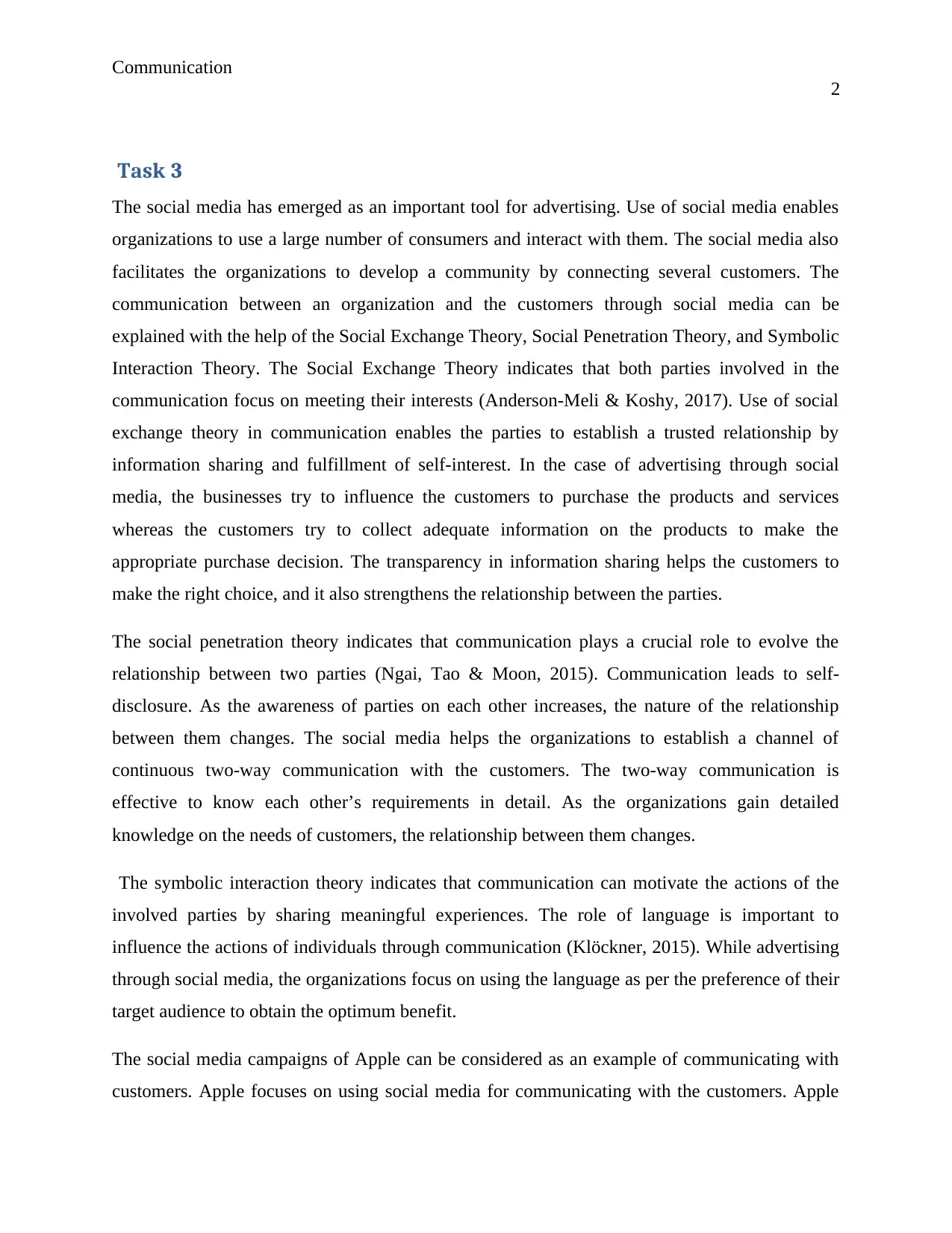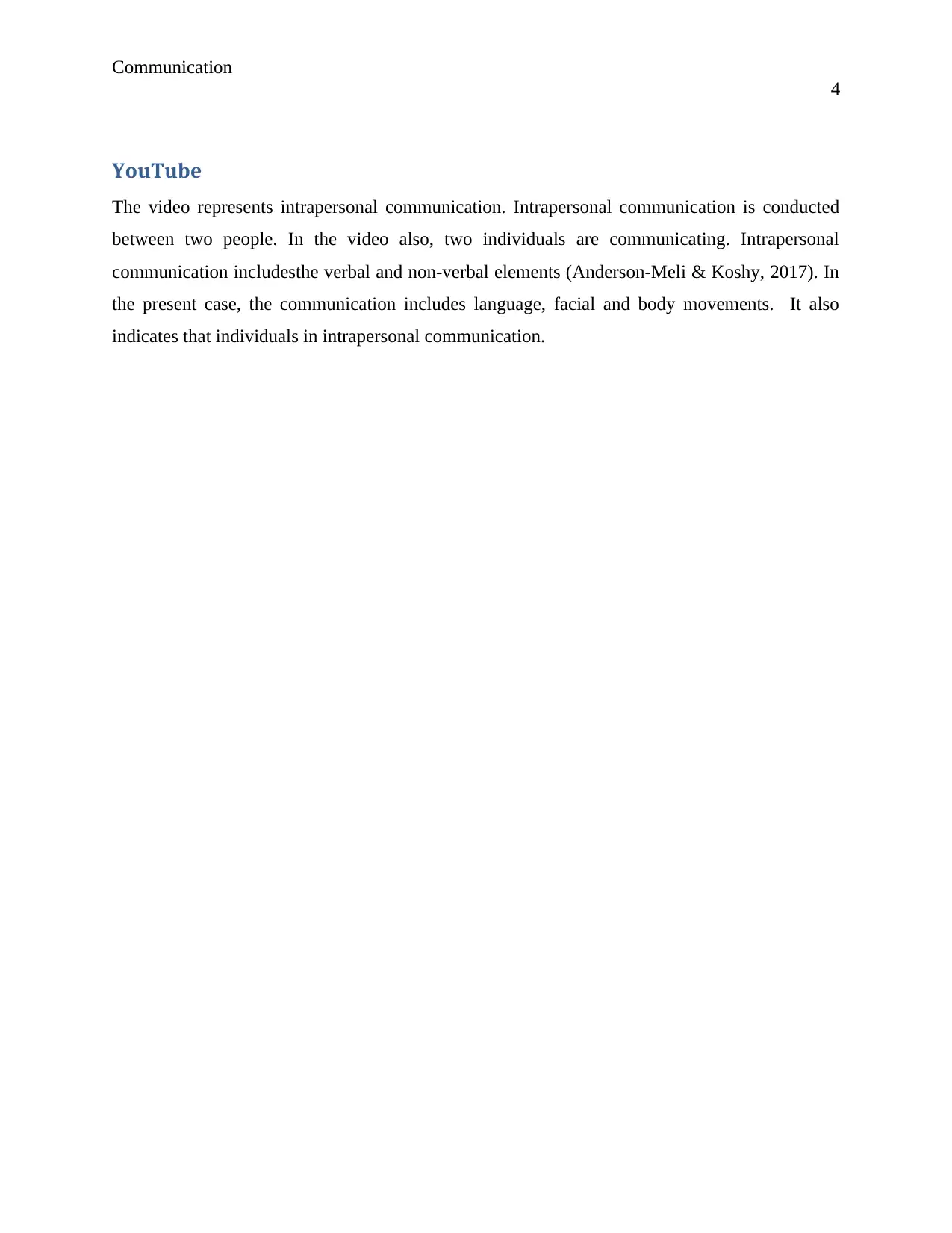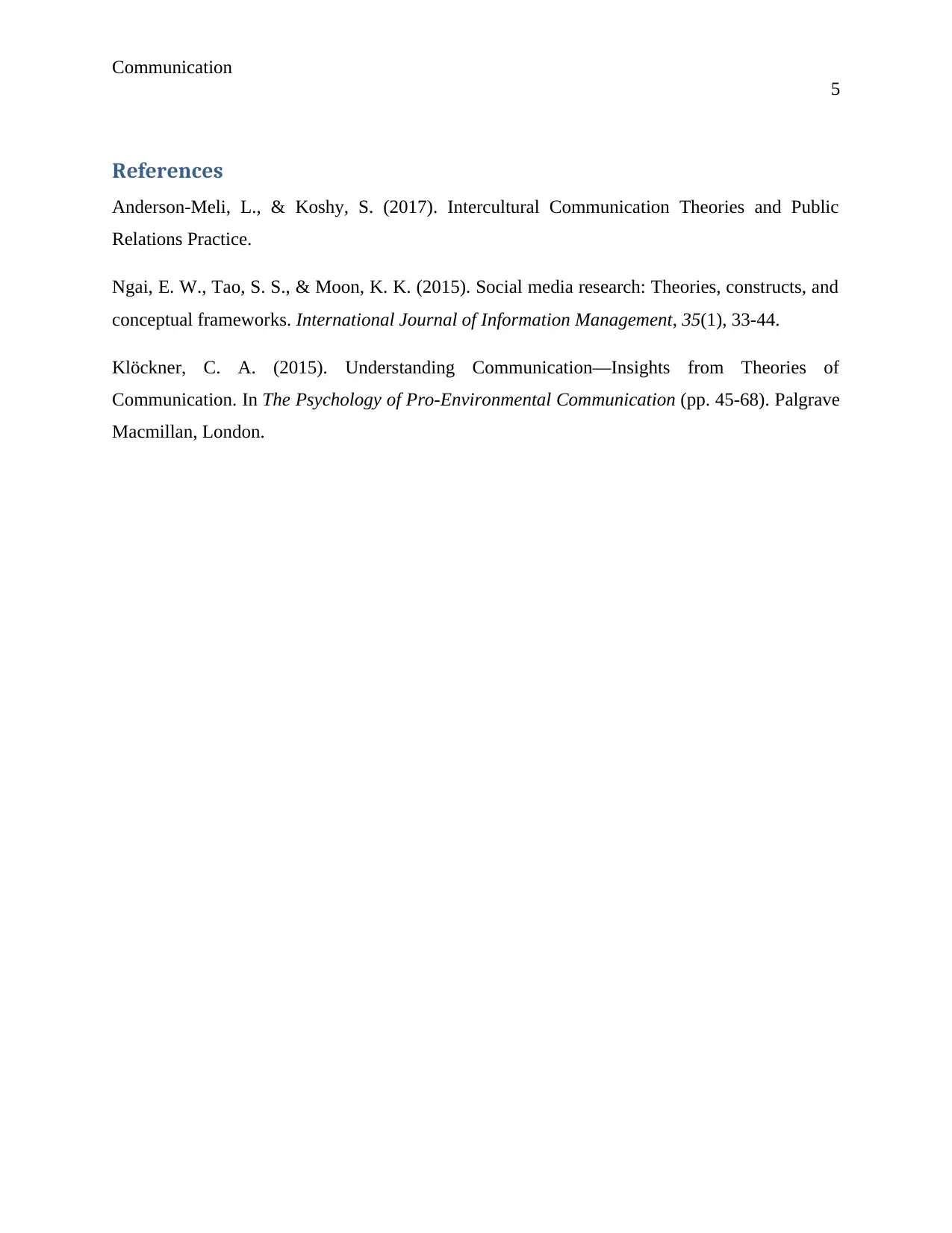Communication Report: Social Media Advertising and Theories Analysis
VerifiedAdded on 2019/09/23
|6
|625
|166
Report
AI Summary
This report examines communication strategies in social media advertising, focusing on the application of the Social Exchange Theory, Social Penetration Theory, and Symbolic Interaction Theory. It explains how these theories influence interactions between businesses and consumers, emphasizing information sharing, relationship building, and the impact of language and symbolic meaning in campaigns. The report uses the example of Apple's social media campaigns to illustrate these concepts, demonstrating how companies engage their target audience and strengthen customer relationships. Additionally, the report briefly touches on intrapersonal communication within the context of a video, mentioning the use of verbal and non-verbal elements. The provided references support the theoretical frameworks presented.
1 out of 6









![[object Object]](/_next/static/media/star-bottom.7253800d.svg)